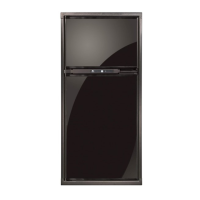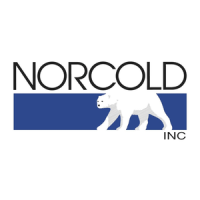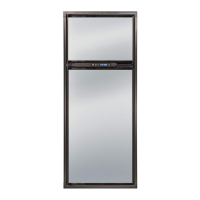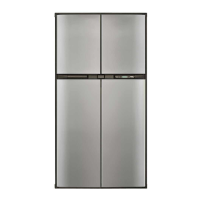Do you have a question about the Norcold Polar NA10LX and is the answer not in the manual?
| Brand | Norcold |
|---|---|
| Model | Polar NA10LX |
| Category | Refrigerator |
| Language | English |
Understanding safety alert symbols and signal words for hazard identification and prevention.
Avoid storing flammable materials near the refrigerator to prevent fire hazards.
Ensure correct wire/fuse sizes and avoid improper electrical connections for safety.
Only authorized personnel should perform service and maintenance to prevent injury.
Warning about pressurized cooling system and hazardous contents if damaged.
Regularly check ventilation pathways for blockages and flammable materials.
Details on refrigerator capacity and operational leveling limits to prevent damage.
Information on refrigerator performance while the vehicle is in motion.
Tips for optimal cooling performance and reducing ice buildup in the food compartment.
Guidance on using the freezer compartment for pre-frozen foods.
Instructions on using crispers and positioning door bins for optimal storage.
Instructions for adjusting and securing door bin slides to prevent movement during transit.
Guide on how to remove, move, and install adjustable shelves in the freezer and food compartments.
Instructions for operating and securing the refrigerator doors during travel and closure.
Procedure for replacing the interior light bulb in the fresh food compartment.
Steps to properly shut down the refrigerator using the ON/OFF button.
Explanation of the heater that prevents moisture on the center divider.
How the temperature control system limits frost on cooling fins and manages defrost water.
Description of the backup system that maintains cooling if the primary sensor fails.
Steps and precautions for safely starting up the refrigerator, including air flow checks.
How to turn on the refrigerator and set the temperature in automatic mode.
Understanding the icons and indicators for AC electric and propane gas operation.
How the refrigerator indicates when AC or propane gas is unavailable or operating on DC electric.
Explanation of the priority scheme for automatic energy source selection.
Instructions for operating the refrigerator using AC power manually.
Instructions for operating the refrigerator using propane gas manually.
Procedure for properly shutting down the refrigerator.
Impact of high altitudes on propane gas operation and recommended alternatives.
Refrigerator performance and potential issues in freezing temperatures.
Details on the optional ice maker, its operation, and temperature requirements.
Periodic checks to ensure optimal and safe refrigerator performance.
Understanding frost formation and the automatic defrost process.
Step-by-step instructions for manual defrosting, including safety precautions.
Guidance on cleaning the interior of the refrigerator to prevent odors.
Instructions for removing and cleaning the refrigerator's drip tray.
Procedure for safely removing and cleaning the glass shelf.
How to check and ensure the refrigerator doors seal correctly to maintain temperature.
Steps for preparing the refrigerator for extended periods of non-use.
Procedure for storing the ice maker for seasonal periods and preparing it for use.
Annual inspection of gas supply lines for leaks and propane pressure.
Verification of the combustion seal, burner, and electrode for proper function.
Checking AC and DC voltage levels to ensure proper electrical operation.
Ensuring the area behind the refrigerator is clear of combustible materials.
How to examine the gas flame for correct color and shape during operation.
Procedure for cleaning the burner orifice, with warnings about potential damage and leaks.
Steps to safely disconnect AC, DC, and propane gas lines before removal.
Detailed steps for physically removing the refrigerator from its enclosure.
Instructions for securing the refrigerator using mounting flanges and trim pieces.
Procedure for reconnecting gas supply lines and DC/AC power.
Performing leak checks on gas lines and connecting final power sources.
Pictorial representation of the refrigerator's wiring components and connections on Side A.
Explanation of labels and components in the wiring schematic and pictorial.
Schematic diagram of the refrigerator's wiring and electrical connections on Side B.
Identification of various components and connectors within the wiring schematic.
List and explanation of fault codes for diagnosing refrigerator issues.












